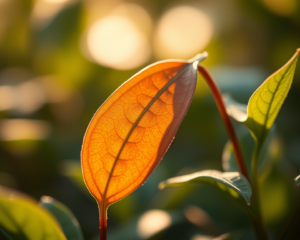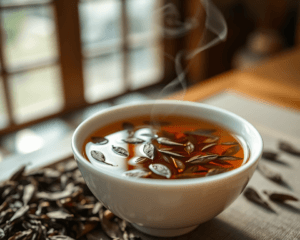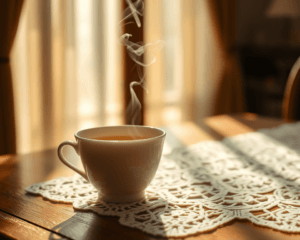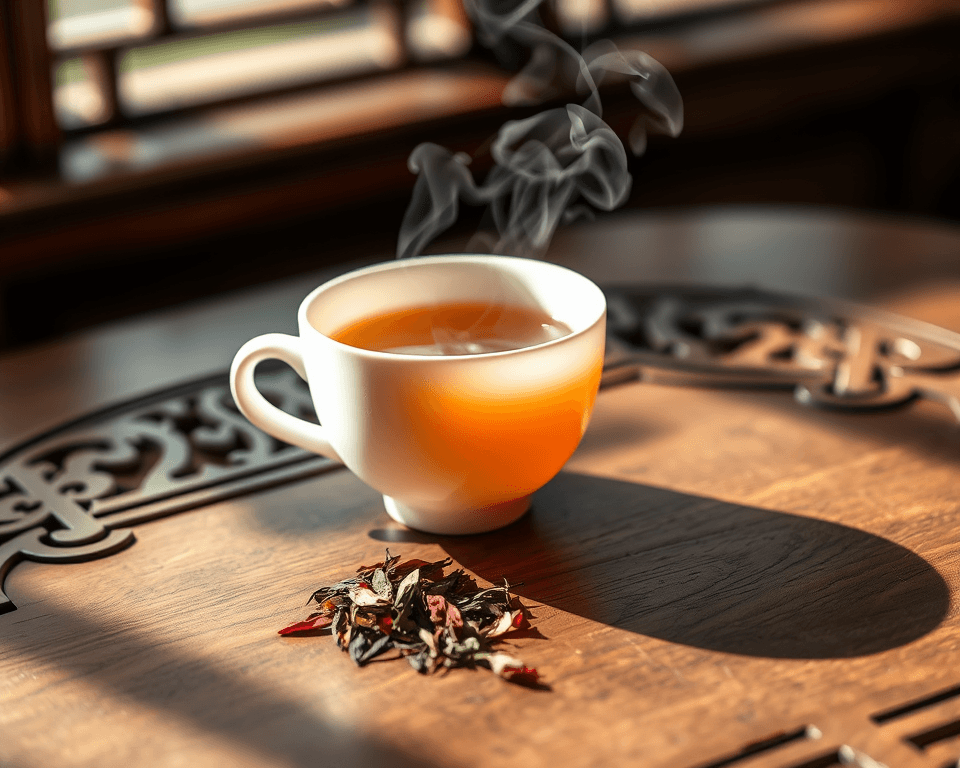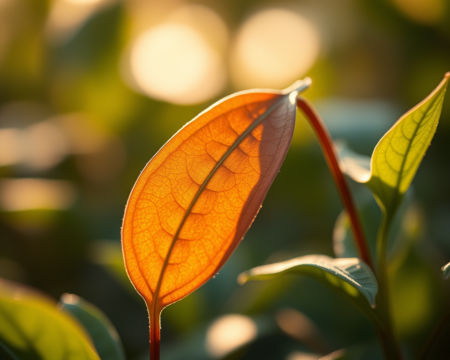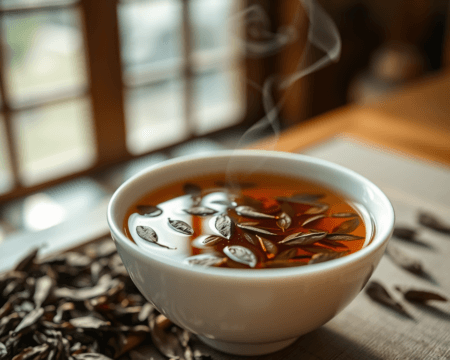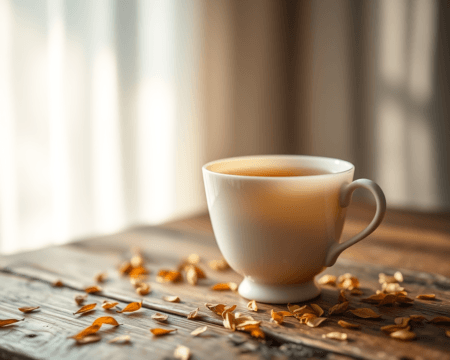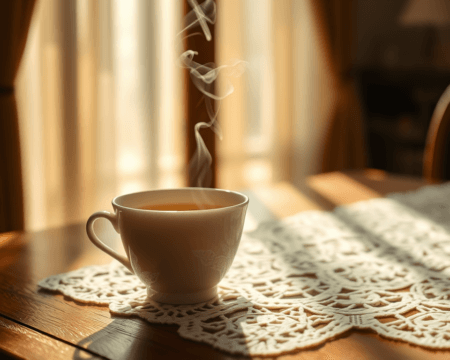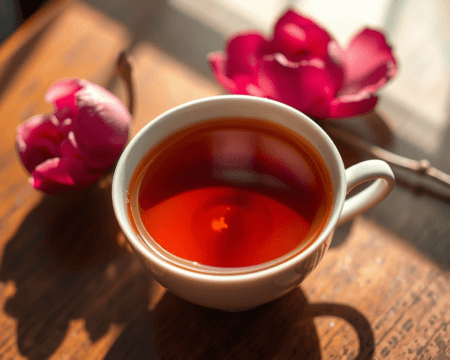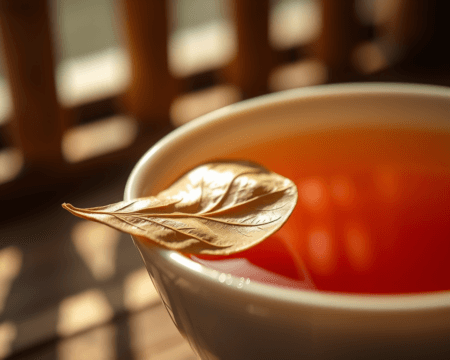Do you want to take your tea game from basic to extraordinary? Trust me, you’re not alone. Many folks think brewing a cup of tea is as simple as boiling some water and dropping in a bag. But if you’re looking to enhance your experience, you need to know the art of infusion. It’s not just about getting the kettle on; it’s about unlocking layers of flavor, aroma, and health benefits. Buckle up, because I’m about to spill the tea—pun intended!
Key Takeaways
- Infusion is the process that brings out the best flavors in tea, and knowing the right techniques is a game changer.
- Different types of tea require specific brewing times and water temperatures for optimal flavor.
- You can elevate your tea experience by experimenting with unique ingredients, ensuring your infusions are both delicious and health-focused.
- Water quality plays a massive role in the final taste, so don’t overlook it!
- Creative infusions can be tailored to the season, making every cup a unique treat.
Understanding the Basics of Tea Infusion
What is Infusion?
Infusion isn’t just some fancy word you toss around at tea parties. It’s a process that allows the water to extract flavors, aromas, and beneficial compounds from the tea leaves. Think of it as a dance between the water and tea—each step in the process impacts the final sip.
While brewing may seem like a straightforward task, the infusion process is an art. You’ve got to get the water temperature and time just right. Too hot? You’ll scorch the leaves and ruin that delicate flavor profile. Too cold? You’ll end up with a watery mess that’ll leave you shaking your head.
Common Types of Tea and Their Characteristics
Let’s get this straight: not all tea is created equal. You’ve got your black tea, green tea, herbal tea, oolong tea, and white tea. Each type boasts unique flavor notes, caffeine content, and brewing techniques.
- Black Tea: Strong and robust, perfect for morning boosts. Think Assam or Earl Grey.
- Green Tea: More subtle and grassy, delivering an invigorating experience. Matcha and Sencha should be in your arsenal.
- Herbal Tea: Technically not tea, but who cares? Chamomile and mint are great for relaxation and digestion.
- Oolong Tea: A beautiful middle ground between black and green, often floral and fruity.
- White Tea: The gentle giant of the tea world, delicate and smooth. Silver Needle is a standout.
Knowing these differences isn’t just trivia; it’s key to brewing a cup that’ll make your taste buds dance.
Step-by-Step Guide to Infusing Tea
Classic Infusion Techniques
Infusing tea can be as simple or complex as you want. Here are some classic methods, including hot infusion and cold brewing.
- Hot Infusion: Use a teapot or French press. Get your water to the right temperature—usually around 200°F for black tea or 175°F for green tea. Let it steep for the appropriate time (about 3-5 minutes for black, 2-3 for green). The result? A cup bursting with flavor!
- Cold Brewing: This is a total game changer, especially in summertime. Just add tea leaves to cold water and let it steep in the fridge overnight. You’re looking at a smooth, less bitter cup by morning. If you want to try something different, pour some freshly brewed tea over ice for an instant treat.
Alternative Infusion Methods
So you want to level up? Ever heard of sous vide or pressure infusion? Yeah, you can do that too! These may sound fancy, but they can elevate your tea experience dramatically.
- Sous Vide: This technique lets you control the water temperature with precision, ensuring you extract those flavorful compounds ideally. Set your sous vide to the desired temperature and infuse for a longer duration—up to an hour might work wonders with certain teas.
- Iced Tea Techniques: Who says iced tea has to be basic? Try flavoring it with fresh fruits or herbs. A pinch of mint or a handful of strawberries can elevate your drink from ordinary to extraordinary in no time.
Enhancing Flavor and Aroma
Combining Ingredients for Unique Blends
If you’re looking to craft something that feels personal and special, start combining ingredients. This is where your creativity can shine. Mix herbs, spices, fruits, and flowers to create unique blends that represent you.
Imagine a calming chamomile tea infused with a slice of lemon and a touch of honey—now that’s a cozy evening waiting to happen. Or think about spicing up green tea with ginger and mint. Your options for infusion combinations are nearly limitless!
The Role of Water Quality and Temperature
You may not think about your water, but if you want to enhance your tea’s flavor significantly, ditch the tap water! The mineral content and filtration have a direct impact on the infusion process.
Aim for good quality water—whether it’s spring, filtered, or bottled—your tea deserves the best! The boiling point matters too—dial it in at precise temperatures for each type of tea. Here’s a sweet spot to remember:
| Tea Type | Ideal Water Temperature | Steeping Time |
|---|---|---|
| Black Tea | 200°F | 3-5 minutes |
| Green Tea | 175°F | 2-3 minutes |
| White Tea | 160°F | 4-5 minutes |
| Oolong Tea | 190°F | 3-5 minutes |
| Herbal Tea | 212°F | 5-7 minutes |
Got that down? Great! Now you’re ready to brew with confidence.
Health Benefits of Infused Tea
Nutritional Advantages of Different Teas
You’ve got your tea, you’ve got your water, but what about the nutritional advantages? Here’s where tea shines, folks. If you’re savvy about the types you choose, you’re in for a health bonus.
- Black Tea: Rich in flavonoids that help support heart health.
- Green Tea: Packed with antioxidants, it’s known to help boost metabolism and support weight loss.
- Herbal Teas: These can assist with various health issues—think peppermint for digestion or chamomile for relaxation.
Infused Teas and Wellness Trends
We live in a world obsessed with health, right? So it makes sense to pay attention to wellness trends when it comes to tea. Herbal wellness is blowing up, with people turning to detox teas for holistic benefits.
These brews can become your go-to, whether you’re aiming to support your digestion or simply looking for a cozy moment. Mindful drinking is all the rage, which means you can find joy in every cup and also reap health benefits simultaneously.
Creative Infusion Ideas for Every Season
Seasonal Ingredients and Flavor Combinations
Want to get seasonal with your tea? Look no further! Think autumn spices like cinnamon and nutmeg in your black tea, or add a refreshing fruit twist during summer with citrus and berries.
Utilizing ingredient seasonality not only keeps things fresh; it also taps into the natural flavors of the time of year. You get to experience something different with every passing season.
Pairing Infused Teas with Meals
Ever thought about food pairing? Pairing infused teas with meals can totally elevate your dining experience. I’ll let you in on a secret: teas can be epic accompaniments to certain flavors!
For instance, try serving a robust black tea alongside a hearty beef stew—it complements those rich flavors beautifully. Or enjoy a light white tea with sushi—it’s all about enhancing the taste balance on your plate.
The right cup of tea can take your meal from good to unforgettable!
Mastering the art of tea infusion means engaging with each technique, flavor profile, and health benefit. Make it personal, make it seasonal, and most importantly, enjoy every sip. That’s what it’s all about, isn’t it? Now, go ahead and brew like you mean it!
Frequently Asked Questions
What are the ideal water temperatures for different types of tea?
Generally, green teas require water around 160-180°F (70-80°C), while black teas need hotter water at about 200-212°F (93-100°C). Oolong teas typically brew best with water at 190-200°F (88-93°C), and white teas do well with slightly cooler water at 160-185°F (70-85°C). Adjusting the water temperature enhances flavor extraction.
How long should I steep my tea for optimal flavor?
Steeping times vary by tea type: black tea typically takes 3-5 minutes, green tea should steep for about 2-3 minutes, oolong tea can be steeped for 4-7 minutes, and white tea often takes 4-5 minutes. Timing helps release the best flavors without causing bitterness.
How does water quality affect tea flavor?
Water quality significantly influences tea’s taste, as impurities can alter the flavor profile. Using filtered or spring water, free from chlorine and excessive minerals, will enhance the freshness and nuances of your tea, allowing for a cleaner and more enjoyable cup.
Can you suggest some unique ingredients for tea infusions?
Absolutely! Consider adding fresh herbs like mint or basil, fruits like citrus or berries, spices such as cinnamon or ginger, and even edible flowers. These ingredients can elevate your tea experience by introducing new flavors and potential health benefits.
How can I customize my tea infusions seasonally?
To align your tea with the seasons, use seasonal ingredients—like warming spices in winter (cinnamon, cloves) or refreshing fruits in summer (watermelon, cucumber). Additionally, you can adjust the tea base and brewing techniques to fit the mood of the season.
Is there a difference between loose leaf tea and tea bags in terms of infusion?
Yes, loose leaf tea typically offers better flavor since it allows for more room for the leaves to expand and release essential oils. Tea bags may contain smaller, broken leaves, which can result in a quicker but less nuanced infusion. For a richer flavor, loose leaf is often the preferred choice.
What are some common mistakes to avoid when brewing tea?
Common mistakes include using the wrong water temperature, steeping for too long or too short, and overlooking the quality of water. Additionally, using old or stale tea can lead to dull flavor. Always check the tea’s freshness and adjust brewing parameters accordingly.
How can I store my tea properly for the best flavor?
To maintain flavor, store tea in an airtight container away from light, heat, and moisture. A cool, dark cupboard is ideal. Avoid keeping tea near strong-smelling foods, as tea can absorb odors easily. This helps preserve its quality and taste over time.
Are there any health benefits associated with herbal tea infusions?
Yes, many herbal teas come with health benefits. For instance, chamomile is known for its calming properties, peppermint may aid digestion, and hibiscus can help regulate blood pressure. Exploring different herbal blends can enhance both flavor and well-being.
